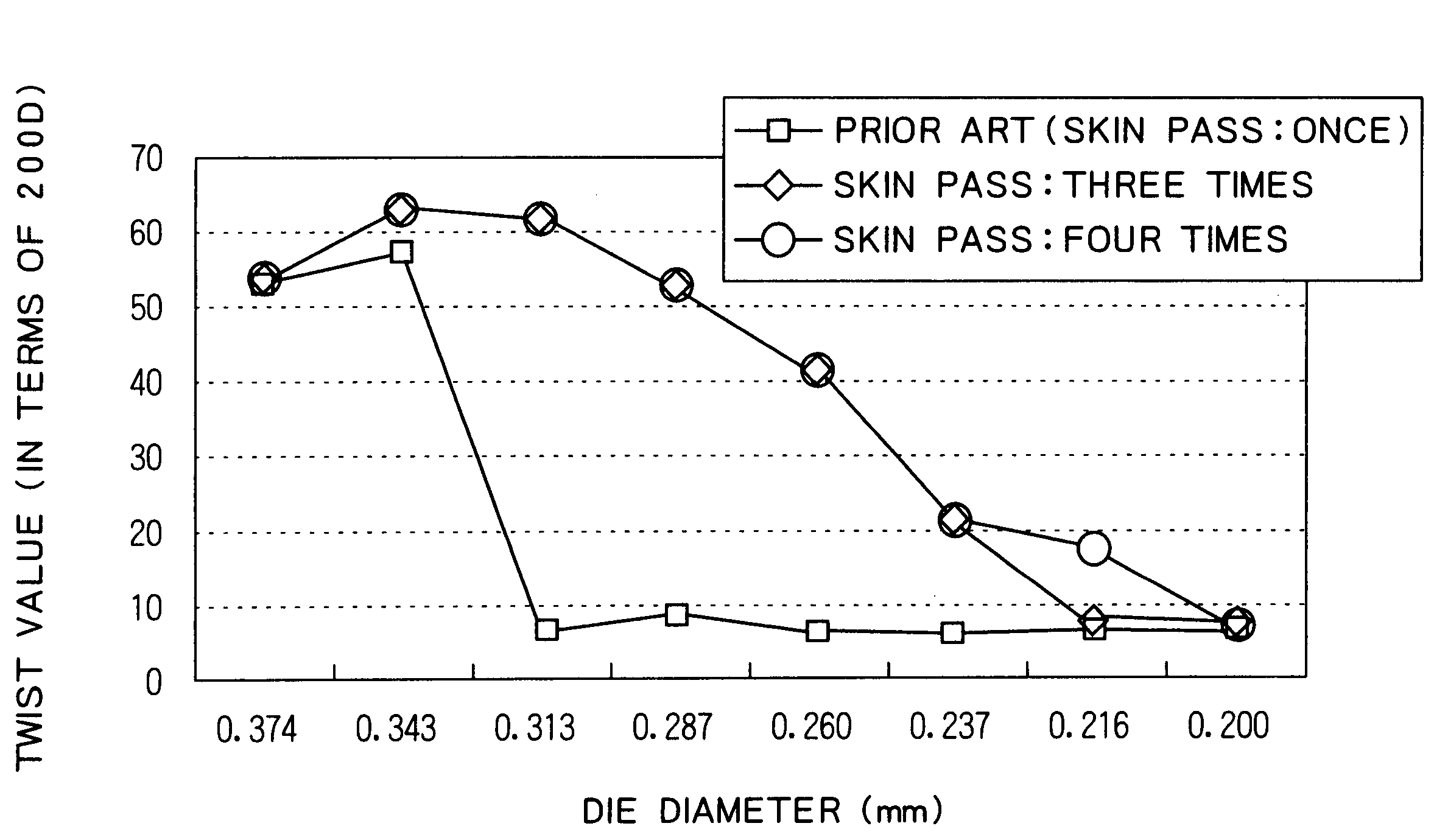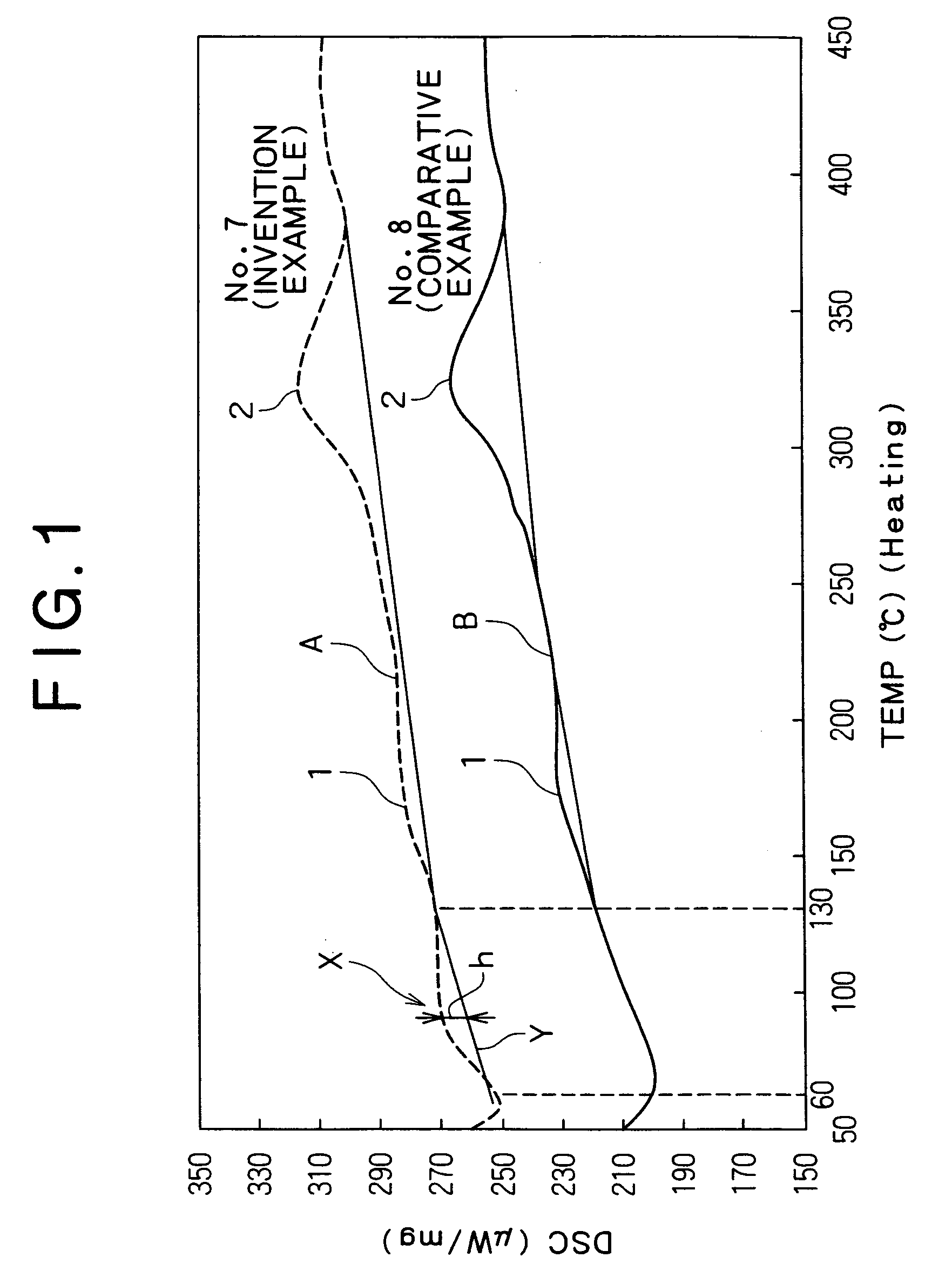Very thin, high carbon steel wire and method of producing same
a high carbon steel wire and ductility technology, applied in the field of very thin, can solve the problems of deterioration of high carbon steel wire, ineffective prevention of delamination, and inability to achieve ductility of each very thin wire, so as to prevent the occurrence of delamination, and improve the ductility of steel wire.
- Summary
- Abstract
- Description
- Claims
- Application Information
AI Technical Summary
Benefits of technology
Problems solved by technology
Method used
Image
Examples
example 1
[0088]Working examples of the present invention will be described below. As Example 1, very thin steel wires were produced while changing the above wet lubrication wire drawing conditions variously to afford very thin steel wires, then the presence or absence of the foregoing exothermic peak X in DSC of each of the very thin steels wires, the maximum height h of the exothermic peak, and delamination characteristic, were evaluated.
[0089]More specifically, high carbon steel billets of compositions A to X in Table 1 below were subjected to hot rolling to produce steel wire rods, then the steel wire rods were subjected to wire drawing and patenting treatment under the wire diameter and strength conditions shown in Table 2 below to obtain a pearlite structure, followed by wet lubrication wire drawing to afford very thin steel wires.
[0090]In both examples according to the present invention and comparative examples, patenting treatment was conducted in the following manner. Heating was mad...
example 2
[0100]Next, high carbon steel wire rods of the compositions A to X shown in Table 1 were subjected to the same treatment as in Example 1 and then to wet lubrication wire drawing in the same way as in Example 1 while setting the reduction of area in each die, wire passing rate (Di2×v), lubricant liquid temperature, and skin pass wire drawing conditions, within the respective preferred ranges. Then, the wire drawability of very thin steel wires after the wet lubrication wire drawing, the presence or absence of the exothermic peak X in DSC with respect to the very thin steel wires, the maximum height h of the exothermic peak X, and delamination characteristic, were evaluated in the same manner as in Example 1, the results of which are set forth in Table 3.
[0101]As is apparent from Table 3, very thin, high carbon steel wires of Examples 18 to 30 according to the present invention comprise chemical components A to M, respectively, which fall under the scope of the present invention, and ...
PUM
| Property | Measurement | Unit |
|---|---|---|
| temperature | aaaaa | aaaaa |
| diameter | aaaaa | aaaaa |
| temperature | aaaaa | aaaaa |
Abstract
Description
Claims
Application Information
 Login to View More
Login to View More - R&D
- Intellectual Property
- Life Sciences
- Materials
- Tech Scout
- Unparalleled Data Quality
- Higher Quality Content
- 60% Fewer Hallucinations
Browse by: Latest US Patents, China's latest patents, Technical Efficacy Thesaurus, Application Domain, Technology Topic, Popular Technical Reports.
© 2025 PatSnap. All rights reserved.Legal|Privacy policy|Modern Slavery Act Transparency Statement|Sitemap|About US| Contact US: help@patsnap.com



